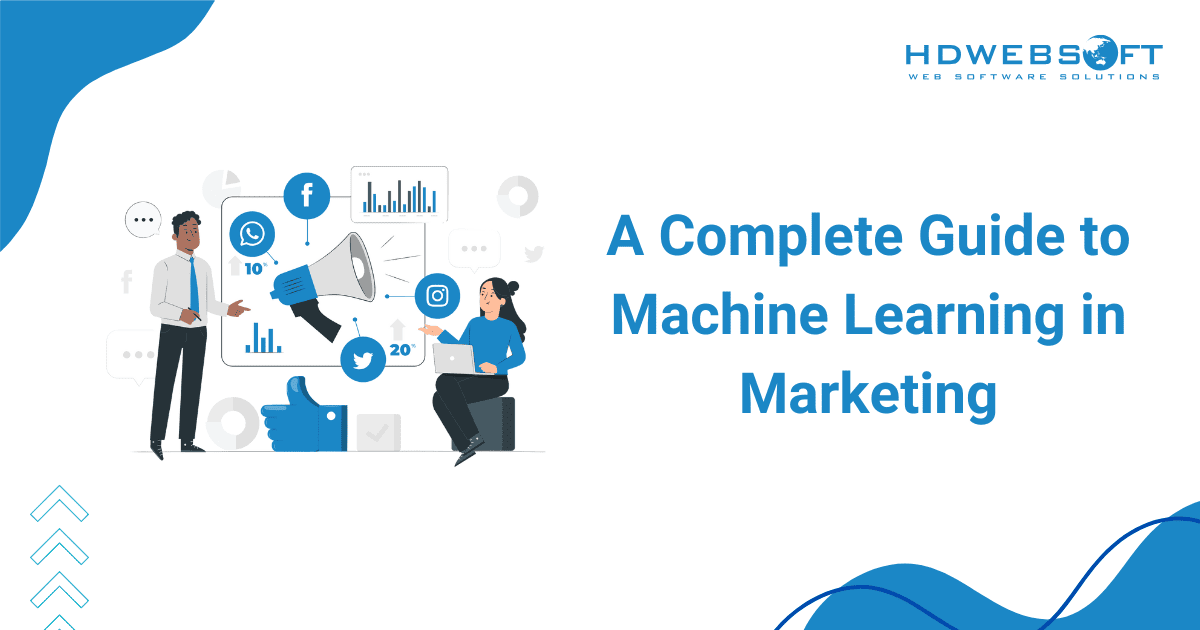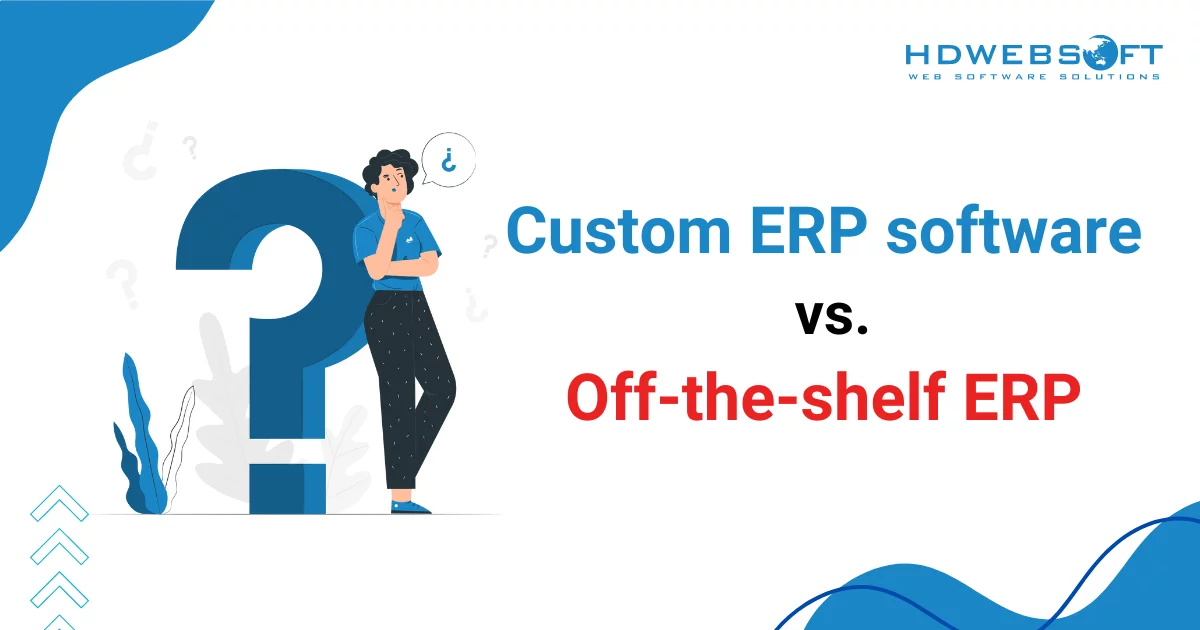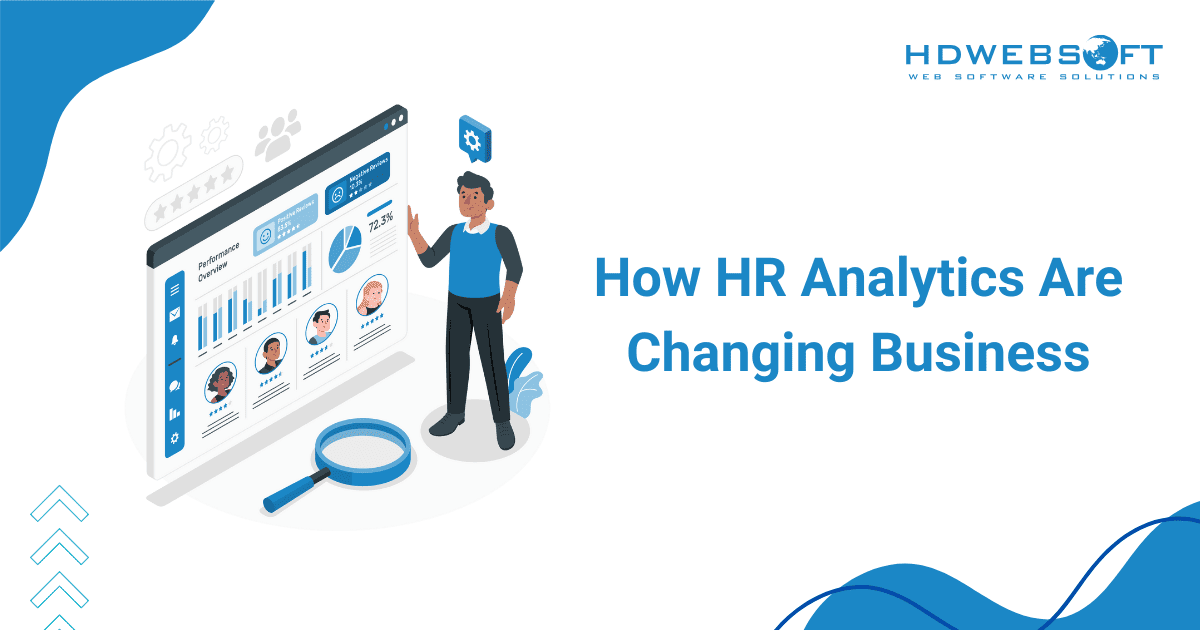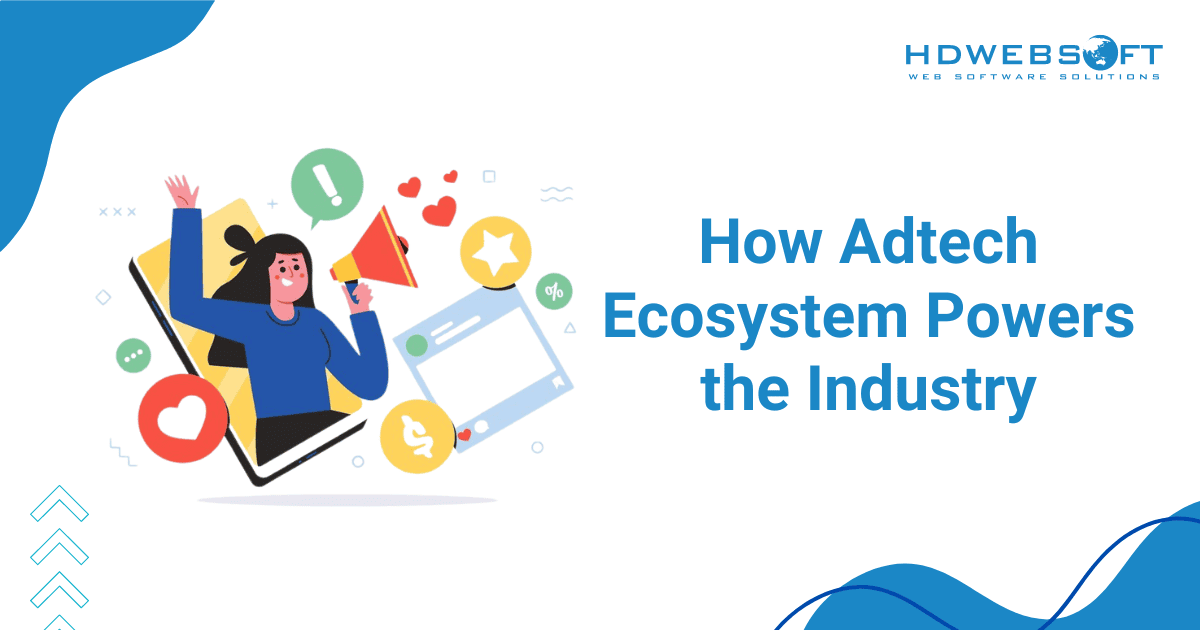
Adtech Ecosystem and How It Powers the Industry
The adtech ecosystem stands at the forefront of today’s digital-first world, where the way brands reach and engage consumers has evolved rapidly. It facilitates everything from automated ad buying to advanced audience targeting. For companies aiming to stay competitive, understanding this ecosystem is crucial. But what exactly does the adtech ecosystem encompass? And how do the various players and technologies work together to drive the advertising industry forward?
In this blog, we’ll dive deep into the adtech ecosystem, exploring its structure and key players. We will also go through different types of the mentioned technology with the popular tools currently shaping the advertising landscape.
What is the Adtech Ecosystem?

At its core, the adtech ecosystem refers to the set of technologies and platforms designed to manage digital advertising efforts. These technologies support processes like ad creation, targeting, buying, and performance measurement. As more businesses shift to digital marketing technology, adtech solutions are becoming integral to marketing strategies. These solutions enable brands to deliver more personalized and relevant ads to users across platforms such as social media and other digital environments.
The ecosystem is built on automation and real-time data. It allows advertisers to connect with their target audiences in more meaningful and measurable ways. Adtech is continuously evolving to keep pace with the changing demands of the market. Whether through programmatic advertising or advanced machine learning algorithms for audience segmentation, it adapts to meet new challenges and opportunities.
In the adtech ecosystem, both publishers and advertisers leverage technology to accomplish their digital marketing objectives.
Publisher
Publishers seek to create an appealing environment for advertisers to showcase their products and services.
A publisher could be the owner of a website or app with a loyal user base. Their goal is to manage ad placements on their platform in a way that complements their distinctive user interface (UI).
Advertisers
On the other hand, advertisers aim to target the right audience with the right ads at the optimal time.
They leverage AdTech to identify suitable publishers, bid on ad placements, track visitor impressions, and assess customer acquisition costs to achieve this. They can also automate the ad-buying process using algorithms.
The Key Players in the Advertising Landscape
A diverse group of players powers the ecosystem, each contributing to the efficiency and effectiveness of digital advertising. Among the most crucial participants are media agencies and advertising networks. These two entities are pivotal in shaping how ads are created, placed, and optimized for maximum impact.
Media Agencies
They are at the forefront of helping brands navigate the complex adtech ecosystem. As strategic partners, they assist businesses in crafting the right message and reaching their ideal audience. Furthermore, agencies manage everything from campaign planning and budgeting to the platform selection and channels where the ads will appear.
By leveraging data analytics and cutting-edge technologies, they provide advertisers with essential insights. These insights help optimize performance and achieve higher returns on investment. Moreover, their expertise in media buying and audience targeting ensures that campaigns are not only efficient but also highly personalized.
Advertising Networks
On the other hand, advertising networks act as intermediaries between advertisers and publishers. They aggregate ad space from various publishers and offer it to advertisers. As a matter of fact, they’re the ones simplifying the process of placing ads across multiple websites or apps.
Ad networks are essential to the adtech ecosystem because they provide access to a broad inventory. This access allows advertisers to reach a large and diverse audience. Whether through display ads, mobile ads, or video ads, advertising networks streamline the buying process. As a result, they ensure that ads are placed in the right environments to reach the desired audience.
Together, media agencies and advertising networks form the backbone of the advertising technology ecosystem. They work hand in hand to ensure that digital advertising campaigns are both effective and efficient.
Main types of Adtech Platforms
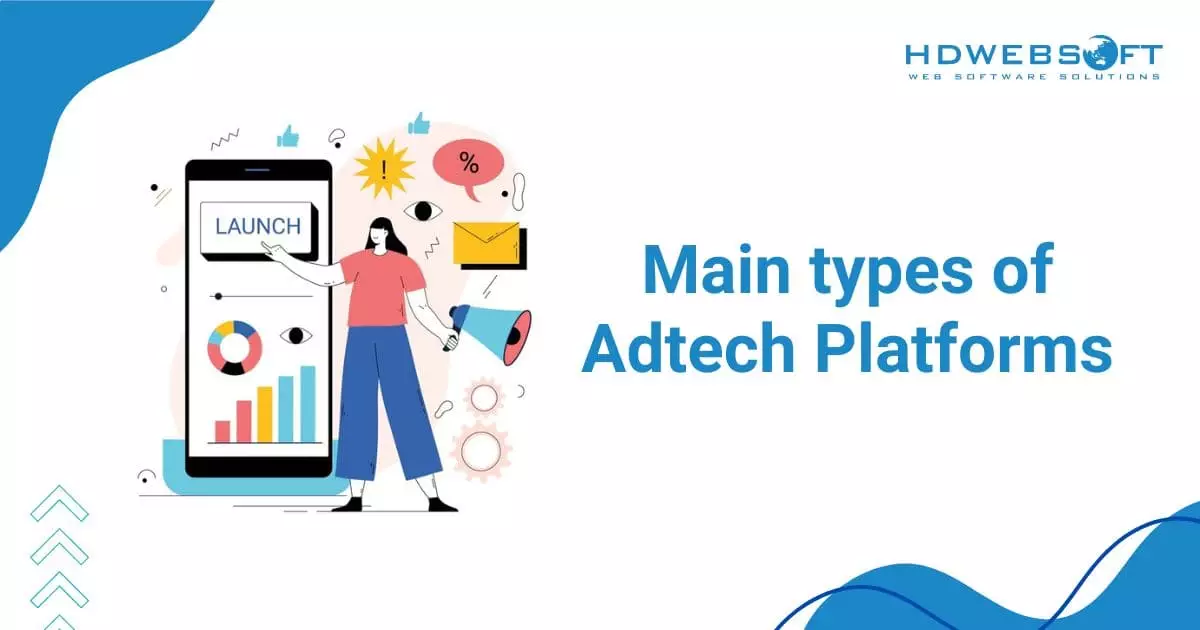
The advertising tech ecosystem comprises various platforms, each designed to fulfill specific roles in the digital landscape. It’s important to understand the different types of adtech platforms that make this ecosystem run smoothly. Here’s a breakdown of the most important platforms within the adtech ecosystem and how they contribute to successful advertising campaigns:
Demand-Side Platform (DSP)
A DSP is a crucial tool that advertisers use to purchase digital ad space in an automated fashion. With it, advertisers can bid on ad inventory in real-time across multiple websites, apps, and other digital platforms.
This process is known as programmatic advertising, which allows advertisers to reach their target audiences more efficiently. What sets a DSP apart is its ability to analyze user data and deliver ads to specific demographics. Desirably, campaigns are more targeted and cost-effective.
For instance, an advertiser looking to promote a new product to 18-24-year-olds can use DSPs to target that specific age group. This targeting occurs across a variety of platforms and in real-time. DSPs save time and resources by automating the process. Consequently, advertisers are free to focus on campaign strategy rather than manual ad buying.
Supply-Side Platform (SSP)
On the publisher’s side of the adtech ecosystem, we have the Supply-Side Platform. SSPs allow publishers to manage, sell, and optimize their ad inventory. Just like DSPs enable advertisers to buy ads automatically, SSPs help publishers sell ad space more efficiently.
When a publisher uses an SSP, they can make their inventory available to a large pool of potential buyers. This approach ensures they get the best possible price for each ad impression through real-time bidding (RTB).
In addition, SSPs are particularly valuable because they maximize the revenue a publisher can earn from their digital content. Moreover, by connecting to multiple DSPs and ad exchanges, publishers gain access to a much broader market of advertisers. As a result, this connectivity increases their chances of selling their inventory at a premium rate.
Agency Trading Desk (ATD)
An Agency Trading Desk is a centralized platform agencies use to manage their programmatic ad buys across different DSPs. Additionally, ATDs serve large advertising agencies, providing them with the ability to handle multiple clients’ campaigns from a single interface.
Because ATDs are operated by media agencies, they offer a level of expertise that individual advertisers might not have. Agencies using ATDs can provide data-driven insights, helping clients optimize their campaigns for better results within the adtech ecosystem.

ATD within the advertising ecosystem gives customers insights to streamline their decision-making-process.
Data Management Platform (DMP)
A DMP is the backbone of the advertising tech ecosystem when it comes to handling audience data. DMPs collect, store, and analyze large sets of user data from various sources, such as websites, apps, and social media. Advertisers and publishers can use DMPs to segment audiences based on behavior, demographics, and other relevant factors. Ultimately, it helps them deliver more personalized ad experiences.
Moreover, DMP consolidates large volumes of data and utilizes big data analytics and AI/ML technology to identify trends and consumer behaviors. The platform assists users in creating distinct target segments and customer profiles.
For advertisers, the ability to understand audience behavior is key to crafting successful campaigns. DMPs let brands harness data to target specific user segments, improving both the relevance of their ads and the ROI.
Advertisement Exchange
An advertisement exchange is a digital marketplace within the adtech ecosystem. This is where advertisers and publishers can buy and sell ad space in real-time.
Furthermore, ad exchanges are a fundamental component of programmatic advertising, as they connect DSPs with SSPs to facilitate transactions. Through ad exchanges, advertisers can bid on ad impressions, and publishers can sell their inventory to the highest bidder.

With this platform, advertisers can easily bid on ad impressions to maximize the value of their budget.
The real power of an ad exchange lies in its ability to provide access to a wide range of inventory and buyers. This broad access fosters competition, driving up prices for premium ad spots and ensuring advertisers get the best value for their budget. It’s through ad exchanges that the advertising tech ecosystem achieves real-time, data-driven advertising at scale.
How do Different Adtech Tools Work Together?
Before the rise of AdTech, publishers and advertisers connected through direct channels. In this traditional setup, publishers sold their ad inventory directly to advertisers. This approach was often time-consuming and made it challenging for smaller publishers to grow.
Today, however, the landscape has changed significantly within the adtech ecosystem. Publishers and advertisers now utilize ad servers and ad exchanges—essentially online marketplaces—to buy and sell available ad inventory. Publishers rely on SSPs to sell their ads, while advertisers turn to DSPs for their purchasing needs.

The adtech ecosystem provides an online marketplace where ads are sold and bought easily.
To enhance the user experience for advertisers and publishers, SSPs and DSPs gather first- and third-party data from DMPs. They then leverage AI and ML techniques to analyze this data, uncovering trends and patterns that enable stakeholders to make informed decisions. As a result, advertisers can strategically place their ads in locations where audience engagement is most likely to be high.
Popular Advertising Technology Tools
Several powerful tools stand out as industry leaders in the fast-evolving landscape, helping advertisers streamline campaigns and achieve better results. These tools have become essential in automating ad buying, optimizing audience targeting, and measuring performance. Let’s take a closer look at three of the most popular advertising technology tools that dominate the industry.
Google Marketing Platform
As part of the adtech ecosystem, Google Marketing Platform is a one-stop solution for advertisers looking to manage their digital campaigns across multiple channels. Moreover, the platform integrates key tools like Google Ads and Display & Video 360. Consequently, this offers a seamless experience for planning, buying, measuring, and optimizing ads.
What sets Google apart is its extensive reach across search, display, and video. Advertisers can target users at every stage of the customer journey. Additionally, its robust analytics tools enable businesses to track performance and gain valuable insights to improve their strategies.
Check out the tool on their website.
The Trade Desk
Another major player is The Trade Desk, a leading DSP that lets advertisers purchase and manage digital ad space programmatically. Known for its transparency and data-driven approach, The Trade Desk empowers advertisers to reach audiences across display, mobile, and video platforms. The best part is that it also includes connected TV (CTV) platforms.
Hence, its advanced targeting and real-time bidding make it essential for brands looking to optimize ad spend and maximize reach.
Check out the tool here.
Adobe Advertising Cloud
Adobe Advertising Cloud is another top contender in the adtech ecosystem, offering a comprehensive platform for cross-channel campaign management. It supports everything from search engine marketing (SEM) to programmatic ad buying. Adobe’s powerful data integration capabilities, combined with its user-friendly interface, enable marketers to deliver personalized ad experiences at scale.
Plus, Its ability to integrate with other Adobe products further enhances the precision and effectiveness of ad campaigns.
Download Adobe Advertising Cloud here.
Managing your Adtech Ecosystem with HDWEBSOFT
The adtech ecosystem is a complex and rapidly evolving environment, continuously driven by technological advances and consumer behavior shifts. As we look ahead, it’s evident that advertising technology will only grow in significance. For brands looking to stay competitive, keeping pace with these changes and leveraging the right tools will be key to succeeding in this dynamic market.

At HDWEBSOFT, we specialize in custom software development services designed to meet the unique needs of your business. Our team collaborates closely with you to identify your specific requirements and challenges. Ultimately, we will craft a tailored solution that aligns with your objectives.
Additionally, our data visualization services offer the insights necessary for making informed decisions. Meanwhile, our data engineering services establish a scalable and reliable data infrastructure customized to your needs.
Contact us to discover how we can transform your valuable data into actionable results.




